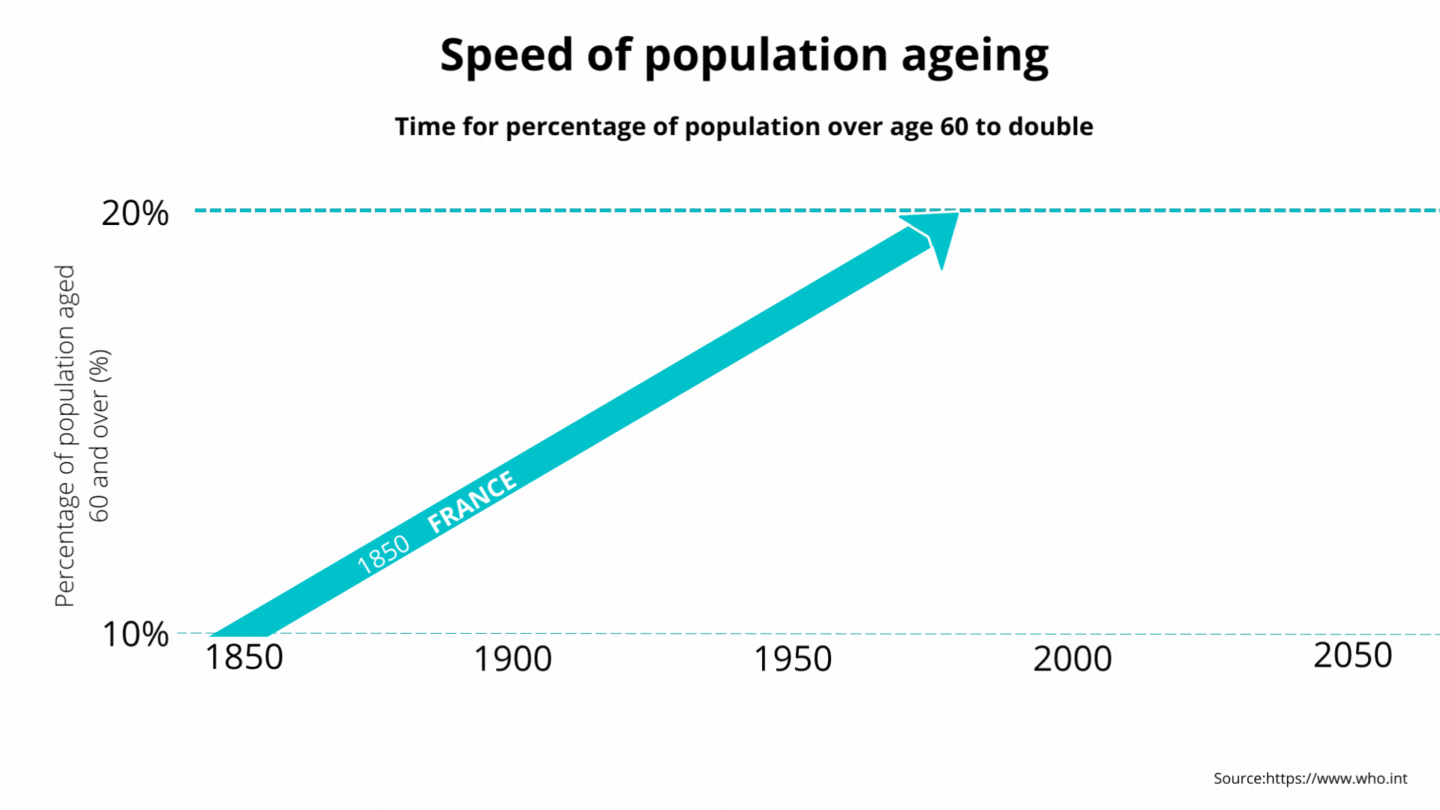Health Insurance in the Twilight of Life
By Arunima Rajan
India’s geriatric insurance sector and the latest trends in senior care.
Here are three major events from Nayana's life.
1. She is ten years old. Her father gets a heart attack. Her family does not have health insurance. Her mother sells her jewellery and raises money for the operation.
2. She is twenty years old. Her mother, who does not have health insurance, has to be hospitalised after a stroke. Nayana and her siblings pay for their mother’s treatment from their own pockets.
3. She is twenty-five. Her uncle passes away due to a chronic illness, as he was unable to access care at the right time, due to financial hardships.
What's the point of this timeline? Let's fast forward to today. Nayana's mother regularly goes for required treatments, thanks to her disposable income and insurance provided by Nayana's employer.
The main point here is that health insurance can really make an impact on how accessible healthcare is for people. Many Indians like Nayana pick up jobs based on the insurance coverage provided by the company for parents, because healthcare expenses can be a huge burden for families.
Dr. Sujit Chatterjee
Sujit Chatterjee, CEO Dr. L H Hiranandani Hospital points out that India today has a very young population and as much as almost 55% of the population is under the age of 40. “But in the next 15-20 years India will see a virtual rise in the senior citizen population. It is very well established that degenerative disorders in the seniors are quite common, whether they are age-related, eye problems, bone problems, heart problems, blood pressure related issues, malignancy, mental disorders or neurological disorders,” he adds.
He also adds that, the cost of healthcare will increase, and as newer modalities of therapy arrive with better outcomes people will be keen to avail such facilities. “The government has many schemes introduced for healthcare but has to cover a large number of people, and this cover becomes inadequate. The need is that the highest premium should be paid by those who are young, fit, have earning capacity and at the same time are unlikely to fall sick as often as those who are seniors and have multiple health issues. Thus, radical thought in the process of healthcare must be put on the anvil for policy makers to ensure maximum benefit for seniors who have devoted their lives to enhance prosperity in India,” he adds.
A Question of Costs and Coverage
"The biggest issue facing most members who are elderly is the problem of affordability, coupled with the fact that this is the most likely period of one's life stage where someone may use such facilities. A traditional health insurance plan (indemnity insurance) design doesn't solve this problem as it would need to take into account actual cost of treatment and the utilisation percentage. Any fresh covers taken during this period may be restrictive as most members will have pre-existing conditions at this age band. Further insurance policies don't really take into account special services such as home nursing, OP based physiotherapy that may be required during this period. There are solutions which will require innovation in product design, flexibility in regulations and also an increased awareness for such solutions coupled with adequate govt support in relation to subsidies and tax benefits," says Jayan Mathews, Cofounder at Vital, a healthcare insurtech platform.
Patient Hesitancy: A major factor impeding Geriatric Health Insurance
According to the findings from one study, the average out-of-pocket (OOP) expenditure and the percentage of total household health expenditure are significantly higher among elderly households than non-elderly households.
Mathews points out that although the question of insurance penetration being low due to lack of awareness may have been true some years back, this is not any more the case. "Especially post the pandemic, the awareness and need of insurance has increased drastically. The main reason for lack of insurance penetration is still related to the nature of the product, and also the tendency of individuals to postpone their buying decision as the product features don't really offer any advantages of buying the plan early, and also the manner in which the benefits are derived didn't offer value for money. However with new insurtechs, and innovation in product design across insurance manufacturers with benefits and services this is slowly changing," adds Mathews.
New Solutions Bring Options to Senior Citizens
He also adds that insurance companies are trying their best to adapt to new times, and digitisation both in distribution and servicing is a key functionality being built across insurance companies. "The pandemic has resulted in increased demand for insurance across segments and customer types. This has also accelerated the delivery of insurance, benefits and services through digital means. Policy holders are looking for quicker and more efficient delivery of services. Like everything else, customers are demanding quicker onboarding, faster claims settlement, personalised benefits based on life stage and current health requirements. This means insurers need to provide personalised, affordable and also digitised solutions," he explains.
Dr. Aman Khera is the co-founder of Care4Parents, an Eldercare services platform. He claims that Care4Parents is a startup that provides all healthcare services from a single source while enabling online medical histories for family members, along with value adds like access via mobile devices, and a GP and ambulance services on call.
"India is a large, densely populated country with a rapidly ageing population. Moreover, a large proportion of the population lives in rural areas, where the rate of health insurance penetration is low. The disease burden in the subsection is higher than the rest of society, thus making affordability a major challenge here. Lack of financial literacy among the elderly is also a big gap," adds Khera. He notes, "Elderly people should strive to maintain a healthy lifestyle as much as possible. Preventive healthcare cannot be ignored for the elderly. Preventive care can help prevent the development of life-threatening diseases. Seniors can now avail themselves of even more options than before, but most health insurance plans come with co-pays, sub-limits, loading, and deductibles. Insurance companies are in business to make money. A senior citizen group is a high-risk group. If a company offers particular features, it will usually be more expensive than if it does not," he explains.
There are several things that potential policy holders should consider when choosing an insurance policy. Sometimes it can be quite difficult to choose the right kind of insurance policy. Many factors have to be taken into consideration. One can select from a wide variety of insurance providers, and each offers different benefits. Few insurance providers are providing OPD, but these policies are expensive.
What do Waiting Periods and Sublimits mean for Senior Citizens?
"A sublimit is a limit placed on the total amount of coverage provided by a policy for a certain type of loss. A sublimit is a part of, rather than an addition to, the limit which would otherwise apply to the total loss. It can be in other health policies too. For instance, most health insurance plans have sub-limits on cataract surgery. The price of the lenses can range from Rs 25k to Rs 1 lac.An insurer may put a sub-limit on certain treatments and procedures. Health insurance policies have waiting periods to lower the risk for the insurer. Insurance works on the concept of gradually collecting premiums and sharing risks. Therefore health insurers can only start paying out claims once those insured pay their respective health insurance premium," explains Khera.
Digitisation, Self-Assessed Health Status and Better Service Delivery for Aged People
What parts of the insurance value chain are best suited to digitisation? "The entire value-chain can and should adopt digitalization. It is quicker and allows for more informed onboarding. By procuring medical data from NHDM initiatives, risks can be assessed quicker. Members should also be able to digitally share lifestyle and medical information. More data points from across platforms will enable accurate risk evaluation and pricing. This will enable better service delivery and claim adjudication, with digitization, risk engines and more features. The biggest obstacles to all this are legacy systems,” says Mathews from Vital.






